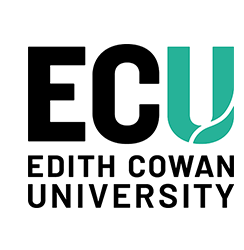Author Identifier (ORCID)
Mehdi Khiadani: https://orcid.org/0000-0003-1703-9342
Muhammad Rizwan Azhar: https://orcid.org/0000-0002-5938-282X
Masoumeh Zargar: https://orcid.org/0000-0001-9811-6156
Abstract
Microplastic fibre (MPF) is the dominant type of microplastic present in water treatment plants’ influent. Coagulation–flocculation followed by sedimentation effectively removes microplastics during pre-treatment; however, conventional inorganic coagulants produce high sludge volume, causing secondary pollution. Chitosan offers a greener alternative but is limited by poor solubility and low molecular weight. In this study, two amphoteric modifications were successfully incorporated into Chitosan, including CMC-CTA, synthesised by modifying carboxymethyl Chitosan (CMC) with 3-chloro-2-hydroxypropyl trimethyl ammonium chloride (CTA); and CMC-g-PDMC, synthesised by grafting poly[(2-methacryloyloxyethyl) trimethyl ammonium chloride] (PDMC) onto CMC. Their coagulation performance for MPF removal was assessed by turbidity measurement. The effects of coagulant dosage, solution pH and sedimentation time were systematically investigated. Zeta potential measurements, scanning electron microscopy (SEM) and Fourier-transformed infrared (FTIR) spectroscopy were employed to investigate the MPF removal mechanism. Among the three coagulants tested, CMC-CTA exhibited the lowest residual turbidity with a coagulant dosage as low as 1 mg/L. Both modified coagulants performed better at neutral to near-alkaline pH, with the lowest residual turbidity recorded at a pH of 8. The MPF removal mechanism by CMC-CTA and CMC-g-PDMC appeared to involve charge patching. These findings provide new insights into MPF removal via amphoteric Chitosan coagulants, particularly in neutral and near alkaline pH ranges, typical of water treatment plant influents.
Document Type
Journal Article
Date of Publication
11-1-2025
Volume
394
PubMed ID
40945423
Publication Title
Journal of Environmental Management
Publisher
Elsevier
School
Nutrition and Health Innovation Research Institute / School of Medical and Health Sciences / School of Engineering
Funders
Australian Research Council
Grant Number
ARC Number : DE220101043
Creative Commons License

This work is licensed under a Creative Commons Attribution-Noncommercial 4.0 License


Comments
Thathsarani, N., Najafi, M., Khiadani, M., Azhar, M. R., & Zargar, M. (2025). Harnessing the power of amphoterically modified Chitosan coagulants for enhanced polyester microplastic fibre removal from water. Journal of Environmental Management, 394, 127273. https://doi.org/10.1016/j.jenvman.2025.127273